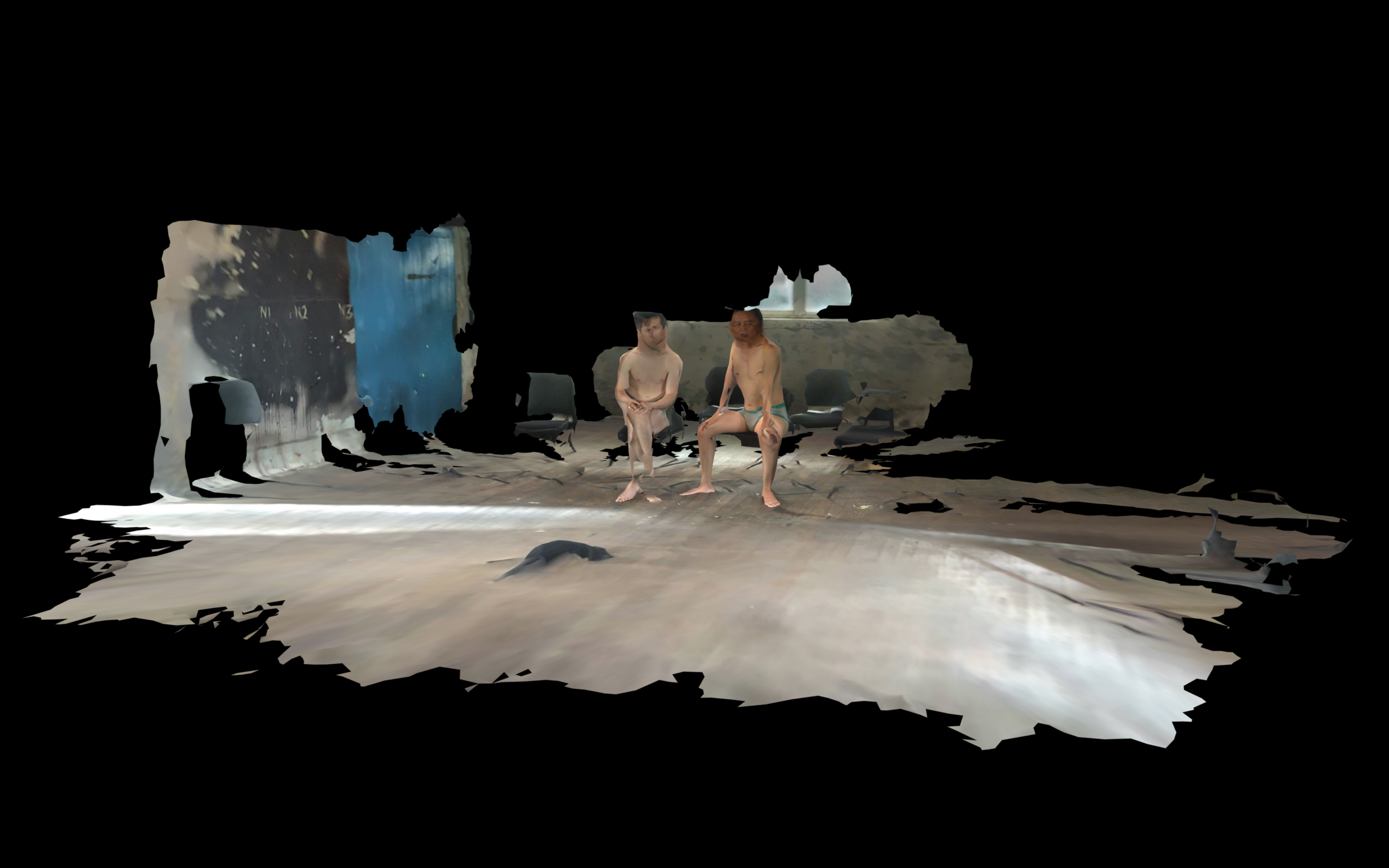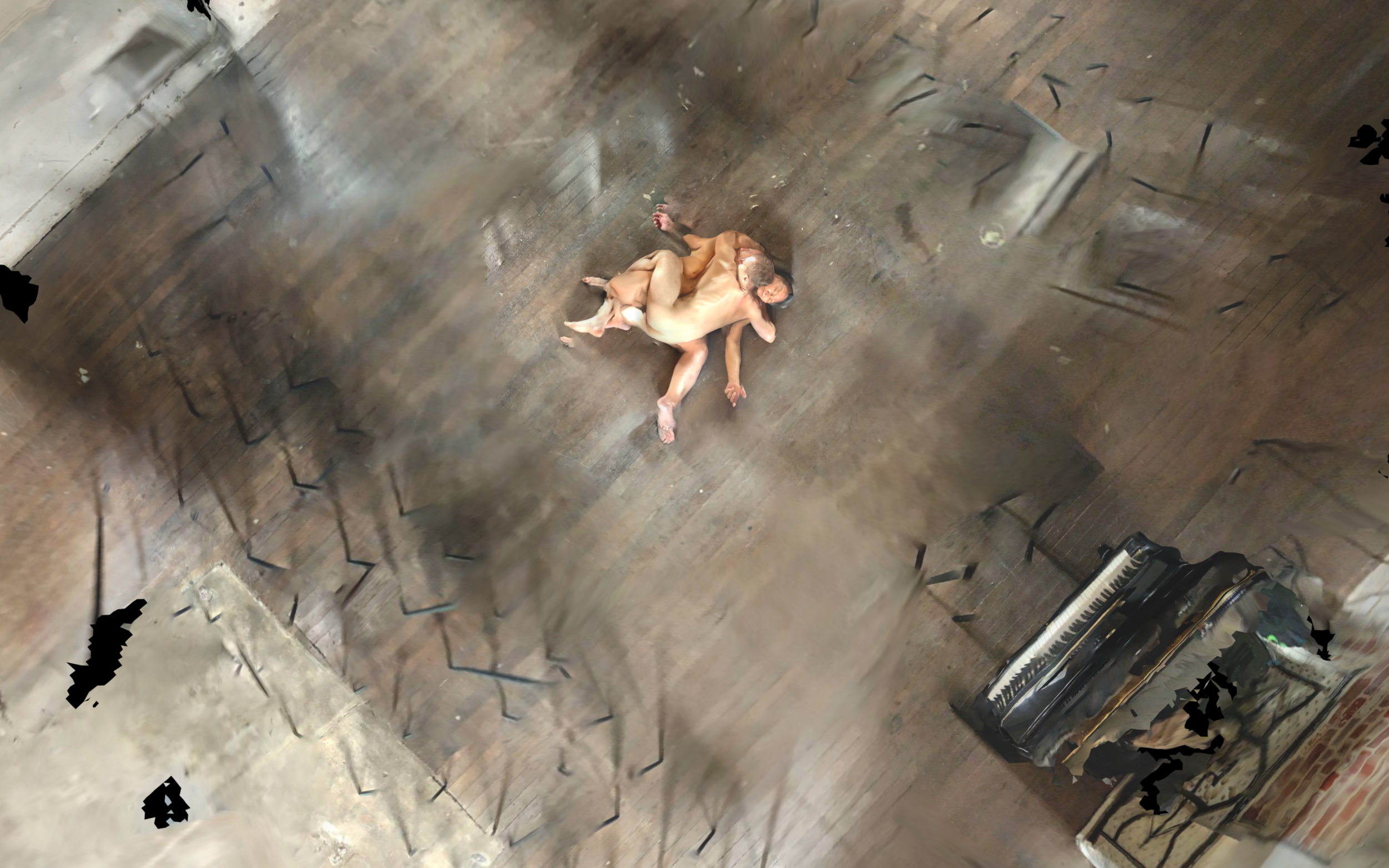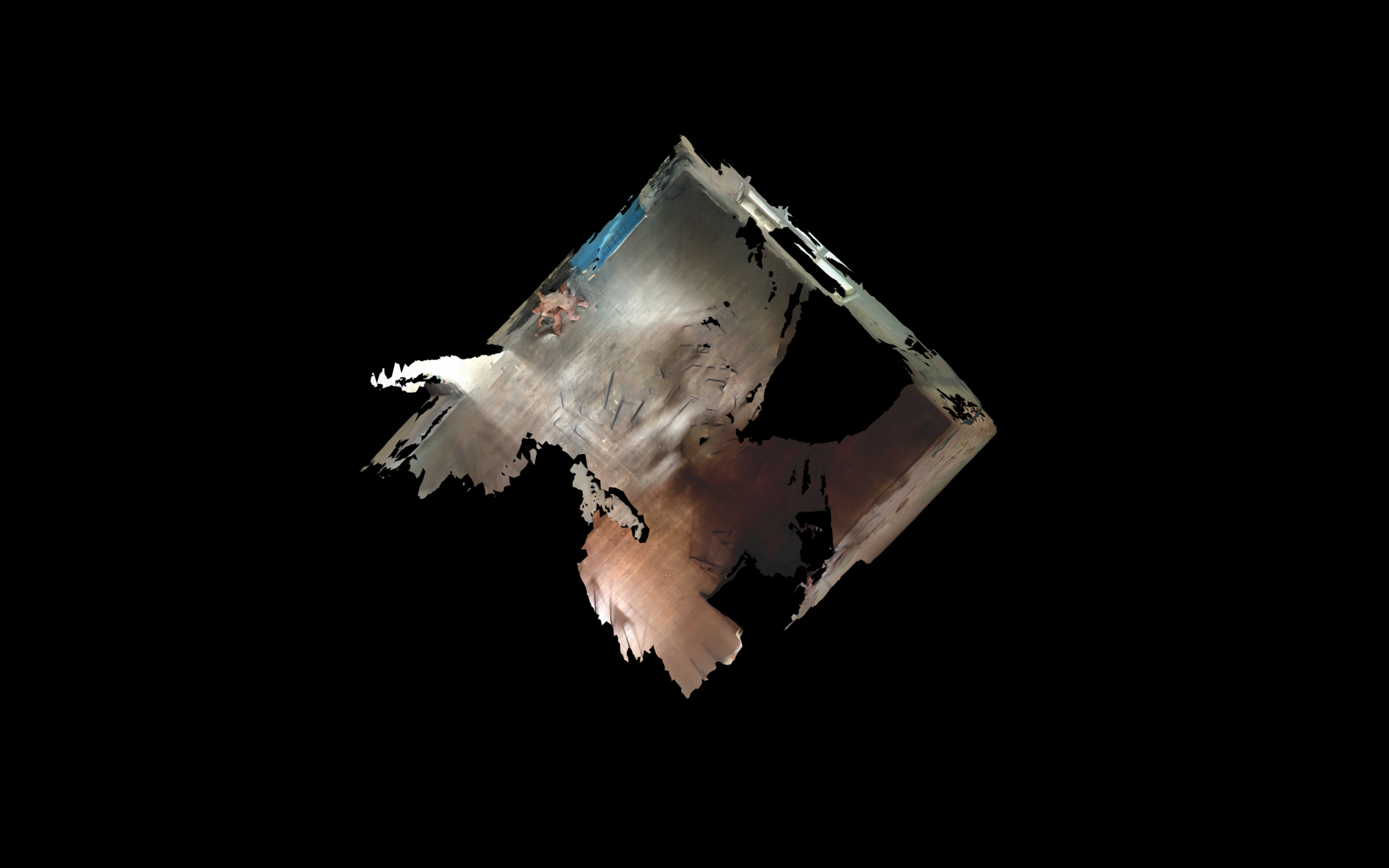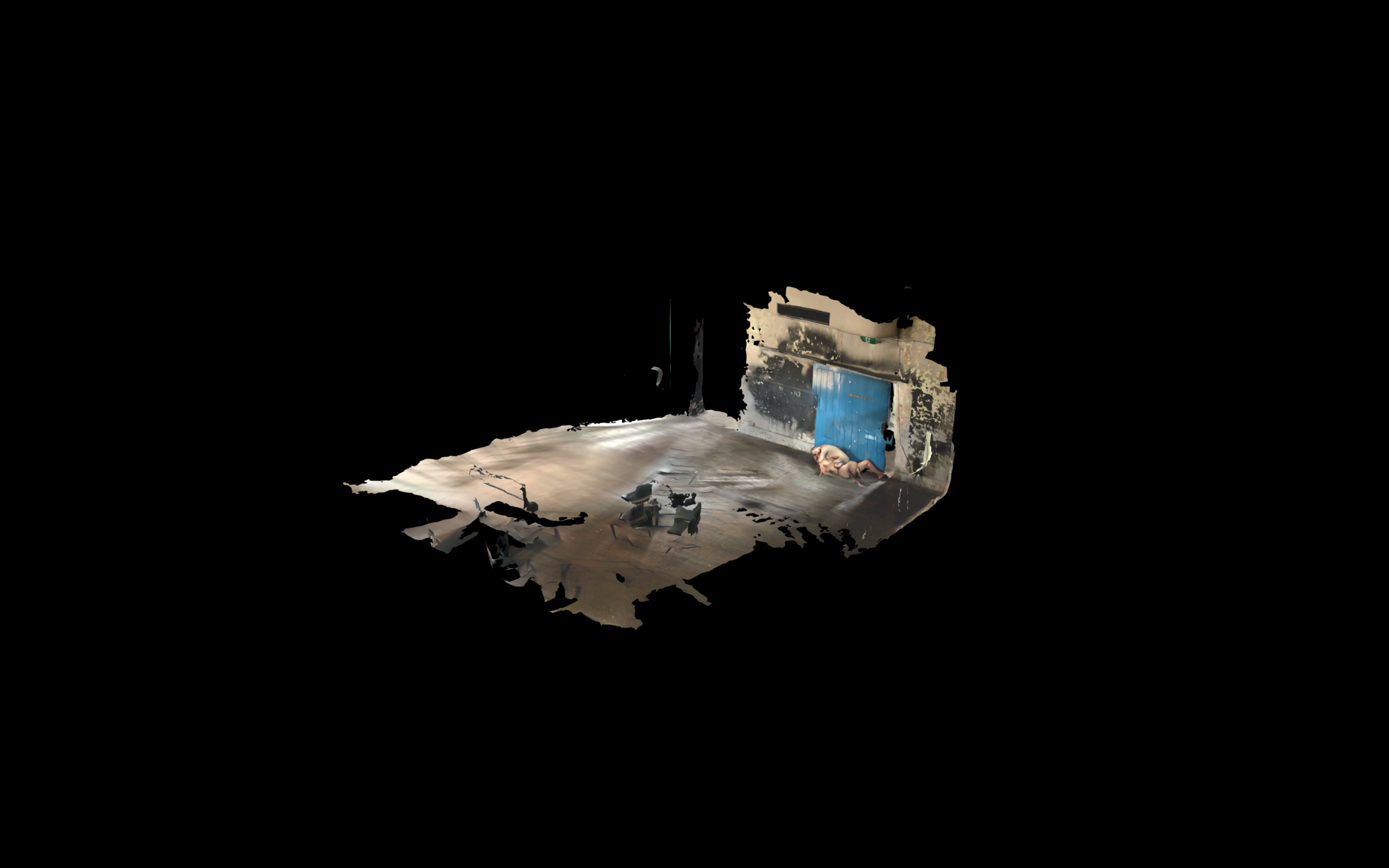




XR
XR + Spatial
XR
XR + Spatial
Introduction
Extended Reality (XR) — encompassing Virtual Reality (VR), Augmented Reality (AR), and Mixed Reality (MR) — is redefining how we experience and interact with environments, information, and each other. Spatial design within XR moves beyond single flat screens, aiming for immersive, multi-dimensional experiences where physical and digital realities blend.
This area of design focuses on crafting environments, narratives, and interfaces that live within three-dimensional space — whether fully virtual, layered over the real world, or a hybrid of both. It demands new ways of thinking about presence, movement, human emotion, and spatial storytelling, requiring interdisciplinary approaches that draw from architecture, interaction design, visual communication, psychology, and sound.
This section of my work explores how designing for presence — in all its forms — opens new possibilities for education, storytelling, cultural memory, and expanded creative practice.

XR-background
Over a DEcade of VR/XR Experience
XR-background
Over a DEcade of VR/XR Experience
A bit about my VR/XR Background
In XR and spatial design, the user isn’t just a viewer — they become an active participant. Experiences must feel intuitive, emotionally resonant, and deeply human, while navigating emerging technologies, platforms, and cultural shifts. Below are a few project galleries that visually document my engagement and work within the VR/XR industry since 2014 (the tumblr watermarks, Oculus DK1’s and DK2’s!! 😂). Seriously though, I’ve worked across professional VR startups, exhibitions, educational workshops, conferences and more for over a decade.
Amsterdam and Cologne VR Collective and GamesCon circa 2014






























XR Bridging Physical and Digital Space
In this 2015 project (you can see I’m using an Oculus DK2) immersive VR spatial experience needed to represent exact measurements and characteristics of physical surroundings. This required matching physical and virtual design scale for experience design














RMIT Capitol Theatre (Industry) (Copy)
RMIT/Capitol Theatre:
Bridging Physical and Digital
immersive Environments
RMIT Capitol Theatre (Industry) (Copy)
RMIT/Capitol Theatre:
Bridging Physical and Digital
immersive Environments
Digitising the Capitol Theatre in 360 For Immersive Design Experiences
#AffectiveDesign #UX #Interactive #SpatialDesign #Research #XREnvironments #360Video #Innovation #ProjectManagement
Introduction
In an era where hybrid cinematic experiences are reshaping audience engagement, this project asked: How can we extend the cultural presence of historically significant venues like the Capitol Theatre into virtual realms, while also enabling student filmmakers to prototype within immersive production environments?
Responding to this challenge, students were embedded within a real-world simulation of a film production studio, assuming professional roles across all stages of the production pipeline. My role as Lecturer involved directing the project while serving as Director of Photography (DOP) and Production Manager — ensuring students navigated both the creative and technical complexities of XR filmmaking.
Overview
Digitising the Capitol Theatre in 360 was an immersive learning initiative that integrated cutting-edge volumetric capture technologies, cinematic storytelling, and extended reality (XR) postproduction workflows. The project formed part of a blended learning pipeline designed to upskill students in emerging media practices through a practice-based research framework. Using the Insta360 Pro 2 camera system, students worked collaboratively to reimagine Melbourne’s iconic Capitol Theatre as an experiential XR canvas.
Project Summary
The workshop unfolded in three distinct but interlinked phases, each designed to scaffold both technical competency and conceptual fluency:
1. Preproduction (Location-Specific)
Students visited the Capitol Theatre to scout the space, develop spatial storyboards, and identify key cinematic perspectives. This phase emphasized production design for 360° capture — a unique challenge requiring spatial choreography and non-linear thinking.
2. Production (On-Site Filming with Insta360 Pro 2)
Using the Insta360 Pro 2, students executed location shoots in 8K stereoscopic video, engaging in:
Camera rig operation and spatial blocking
Sound spatialisation and ambient audio capture
Data wrangling and file management in a multi-terabyte workflow
Students also learned to convert raw 8K footage to 4K for accessible postproduction editing.
3. Postproduction (Remote/Hybrid)
The final stage explored an innovative technique: embedding students’ standard UHD video projects within the Capitol Theatre’s virtual cinema screen. The result was a layered spatial montage — their own narrative short films premiered inside the virtual Capitol. This simulated the prestige of screening at an iconic venue, while maintaining a fully immersive 360° environment.
Deliverables
360° digital twin of the Capitol Theatre interior
Student-led immersive short films, premiered within a virtual theatre screen
Collaborative production logbooks documenting roles, workflows, and reflections
Exported immersive videos suitable for VR headsets and web-based XR platforms
Practice-based research reflections for each student, focused on role-based learning and spatial design insights
Key Insights
Spatial storytelling changes how students understand screen direction and audience agency. Working in 360 forced them to think beyond the frame and into spatial experience design.
Emergent pipelines require interdisciplinary coordination. The film production company model helped students understand the interplay between direction, DOP, postproduction, and digital asset management in new media formats.
Simulating real-world prestige environments creates affective motivation. The act of ‘screening’ their film within the virtual Capitol theatre had a powerful psychological effect — making the experience tangible and emotionally resonant.
Blended learning supports real-world readiness. The combination of in-location production and remote post workflows mirrors contemporary XR production pipelines used in the industry.
Digitising the Capitol Theatre in 360 not only introduced students to extended reality filmmaking but also provided a framework for collaboration, creative ownership, and spatial literacy in digital storytelling. The outcome was more than just immersive content — it was a generative learning environment, equipping students to prototype the future of cinema itself.
A Virtual Tour of the Capitol
This is an example of an RMIT alumni student work, Lucy Ryan, that captured a creative approach to an immersive audiovisual tour of the Capitol Theatre. It serves both as documentation and preservation of cultural place/space but also doubled as a medium for designers to explore augmentation and bridging of virtual and physical space in an immersive, interactive and there
RMIT VX ROBOTICS LAB (XR)
RMIT VX ROBOTICS LAB:
Co-Design for Networked
MultiScreen Arrays
RMIT VX ROBOTICS LAB (XR)
RMIT VX ROBOTICS LAB:
Co-Design for Networked
MultiScreen Arrays
Empathy Design for Multi-SCreen Arrays
#UX #XR #Interdisciplinary #Strategy #Research #Course Design #SpatialDesign #SystemsThinking #Innovation #ProjectManagement
Introduction:
This project showcases my interdisciplinary capability in pioneering innovative uses of RMIT’s Virtual Experiences Laboratory (VXLab), specifically by integrating technical development of the advanced tiled display technology within the GOV Lab as an immersive distributed yet synchronised collective co-design expression. Collaborating directly with Dr. Ian Peake, Technical Manager of VXLab, I strategically extended the lab’s media capabilities for XR-enriched industry, creative and educational experiences.
Overview:
Collaborating closely with RMIT VX Robotics Lab manager, Dr. Peake, I proposed and implemented novel methods and use case to the VX Lab’s multi-screen array. My role involved agile project management, technical exploration, and effective communication with stakeholders, including students and technical staff. This approach ensured that creative and educational objectives aligned with existing technical constraints, delivering innovative multimedia experiences.
Summary:
The core objective was to explore and maximize the VX Lab's technical and operational capabilities whilst simultaneous utilising the Lab to demonstrate extended design and social context for overlapping pedagogical and industry collaborations.
The outcome was a suite of custom-developed tools and an immersive audiovisual design exhibition, enabling both technical and creative use of the Lab’s multiscreen array. This facilitated unprecedented creative opportunities for students and extended the technical functionality of the VXLab itself to better serve industry relations by demonstrating:
System design and testing research for industry partners with complex combinations of systems, design models and tests
Distributed, collaborative design, prototyping and troubleshooting requiring multiple views of complex data;
Prototyping and development of novel visualisation networking
High resolution and live immersive audiovisual rendering of layered image/colour/sound.
Student UX Affective Design Mapping
Composite Empathy/Identity Testing
Audiovisual Affective Production Design Lecture
Deliverables:
Interdisciplinary Design/STEM strategic project modelling
Interdisciplinary Design/STEM technical/creative design research and course design
Co-Design, development and deployment of custom tools and methods for ultra-high-resolution multi-screen array integrations.
Agile management of student learning pathways and project assets within technical resource limitations.
Innovative integration of advanced A/V technologies into overlapping Design/STEM educational contexts.
Enhanced immersive multimedia learning experiences above and beyond benchmark standard visual practice.
Behind The Scenes:
Key Insights:
This initiative highlights the effectiveness of interdisciplinary and strategic design thinking in navigating resource constraints to innovate educational technologies. It exemplifies how agile project management and effective communication among interdisciplinary teams and stakeholders can foster significant technological advancement and amplify institutional capacity for Design/STEM integrations as a way to meet evolving industry demands and foster creative education and research innovation.

Transformative Colour Resonance Environments (XR)
RMIT Digital Design:
Transformative Colour
Resonance Environments
Transformative Colour Resonance Environments (XR)
RMIT Digital Design:
Transformative Colour
Resonance Environments
Transformative Colour-Resonance Environments (TCRE)
#XR #DigitalAvatar #ExhibitionDesign #ImmersiveGalleries #DigitalMediaCuration #DesignPsychology #ColourPsychology #AudioVisualDesign DesignByResearch #UX #ProcessMapping #ProductionDesign #IterativeDesign #QuantitiveAnalysis #QualitativeAnalysis
Introduction:
Resonance and Colour, as spectrum languages for designing and conveying impactful emotional experience, are more often than not subconsciously tied to memory, social constructs and dominant cultural or utilitarian functionality. This learning design, training and assessment course provides a structured design by research methodology which applies comparative analysis of empirical and quantitative studies of audiovisual-colour resonance and how modulations and transformations are affective. Individual user-research pathways are integrated within broader fields of UX/interaction design as technical and creative resonance and colour theory and research.
Overview:
With a strong conceptual and research focus on developing procedural, persuasive, informative, technical and research writing and design documentation frameworks for presenting both process and performative digital media. Outcomes contextualise and integrate resonance and colour based on the general foundations of data/science and behavioural psychology in an innovative, creative and explorative way. Finally, exploration of process documentation of practise based research as emergent multi-sensory environmental design outputs is realised through exhibition curation as an expression of immersive and interactive folio presentation.
Deliverables:
skills development focuses on:
Researching conceptual and practical integrations of resonance and colour, based on the scientific foundations of each, as well as learning about and applying foundational behavioural psychology in a creative and explorative way
Developing design psychology skills, with a particular deep research focus on understanding relationships between resonance and colour.
Innovate beyond current benchmarks for digital media practice and build on ways to add tools and approaches to enhance applied design thinking.
Designing platform-based virtual gallery experiences of project research, design, and development
Key Insights:
Quality and refined accumulation of TCRE research expressed and communicates overarching creative and technical cohesion of innovative approaches to strategic design thinking and practice. Highly polished audiovisual work(s) that clearly demonstrate iterative development of both final outputs and both qualitative and quantitative user research that inform outputs.
Skills development also demonstrates proficiency utilising a software agnostic interdisciplinary design approach to project-specific briefs, including exhibited process/workflow as design outputs.
360 video for VR
Selected 360 Video Works
360 video for VR
Selected 360 Video Works
Selected 360 Video for VR works
Introduction
360 video is a dynamic and evolving medium that offers engaging & interactive forms of storytelling, documentation and visual communication design thinking. Working within a conventional video browsing experience or as an interactive video browsing experience 360 video places more emphasis on environment as a central narrative element to be experienced rather than passively observed.
Augmented Organism Project
The Augmented Organism Project (Cy Gorman and Jazmyne Geis (USA) explore immersive ‘environmental dance’ filmmaking. Movement and its relations to identity with its many developments and outcomes, connecting with landscapes, waterways, weather patterns, and currents and flows involved in navigating a space— working in a relationship that is both internal with the spirit and voice of the land, and external in the global context of events (the stage) within which the land speaks.
This project investigates how “dance” provocatively (re)interrogates and (re)conceptualizes fundamental questions about region, nation, and location, as well as their symbolic representations. This includes studies of both emerging and preexisting creative practices and theorization.
AUGORG is in consideration of issues affecting identity and geopolitics across lands and waters as well as across the global and regional— celebrating and interrogating the connecting, mediating and negotiating power of creative practices, as well as the shifting relationships and pedagogies of integrating dance, film, interdisciplinary design, and technologically creative storytelling.
360 vs UHD Anamorphic transformations of 360:
UHD Anamorphic transformations of 360
360 BTS IMMERSIVE CHOREOGRAPHIC JOURNEY
Side by Side BTS Demonstration of Dance/Choreographic Site Specific Performance
Transient Status
The Transient Status Project, featured as part of the One Night Stand: Transient Status group exhibition at 524 Flinders Exhibition space, Melbourne. It offers a 360 audiovisual experience to be experienced through a browser or in Virtual Reality (VR) and combines stunning footage from Europe and Asia with creative treatment of filters and visual effects.
Cy Gorman & Meng Wang: Altared Forest
Cy Gorman and Meng Wang, collectively known as Yaosai, present here a poetic audiovisual experience of the duet performing 'Altared Forest - Part 1' at Queens College in Melbourne. Immersive video and VR offers new ways of experiencing a musical performance context.

Mergenesis (XR)
Tony Yap COmpany- Mergenisis:
>XR & DIGITAL ENVIRONMENTS
>Interactive AFFECTIVE Installation
Mergenesis (XR)
Tony Yap COmpany- Mergenisis:
>XR & DIGITAL ENVIRONMENTS
>Interactive AFFECTIVE Installation
MERGENESIS
#AR #3dScanning #InteractionDesign #InstallationDesign #LightingDesign #SoundDesign #ProductionDesign #CreativeDirection #Videography #PostProduction #360Video
Introduction
This two-part body of work was produced in collaboration with performance artist Tony Yap, and a guest artist, Brendan O’Connor, carried out at Abbotsford Convent, Melbourne, in January 2021 and post produced in 2022.
Part 1 Overview - Interactive/Performance/Installation/Environment
Part One of Mergenisis explores dynamic and responsive sound-colour resonance to inform and influence performance. In addition to performance, it showcases my custom built interactive light/sound installation and also my 360 camera cinematography and post production.
Creative Direction
Installation Design
Digital Media Production Design
3D Scanning and acquisition of virtual reality (VR) and augmented reality (AR) assets
3D post-production and design
Rendering and curation of digital environment selected stills
Production design thinking and planning for further iterative development including image/digital XR assets
Sound Design
Music Composition - ‘Holding Pattern’
Both video examples here were produced using 360 camera tech to acquisition both 360 video (for VR or interactive browser experience) as well as morphed 16:9 ratio. The combination of 360 cameras and post production for standard HD format produces a unique perspective on both object and environment. Both Spectrum 1 & 2 were recorded in 5.7k (VR) to be outputted at 4k resolution for screen. Here, they are a lower res MVP demonstration example.
Part 2 Overview - Lidar/AR/Virtual Environment Design
Part Two focuses on digitisation of affective performance motifs via XR Lidar post-production processing & Augmented Reality (AR) prototyping
Methods for design and production I utilised in this project are:
The practices and techniques I applied in Part 2 are:
Creative Direction
Digital Media Production Design
3D Scanning and acquisition of virtual reality (VR) and augmented reality (AR) assets
3D post-production and design
Rendering and curation of digital environment selected stills
Production design thinking and planning for further iterative development including image/digital XR assets
Sound Design
Music Composition - ‘Holding Pattern’
Music Composition
My focus for the following scenes are to depict the dualistic collapsing and expanding nature of virtualising representations of digital self, in dialogue with dual-masculinity as a singular entity non-binary entity.
It is important for me as an artist beginning to challenge and explore more deeply aspects of ‘masculinity’ and ‘masculine’ beauty when confronted with the void that technology presents to the human form, consciousness and nexus of co-existence across physical and digital space.



























































































































































































































